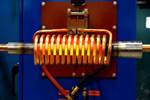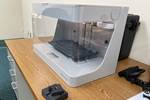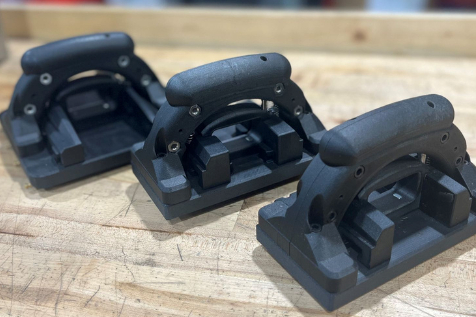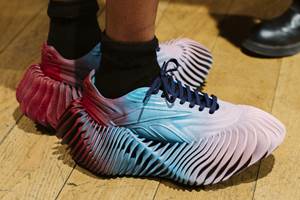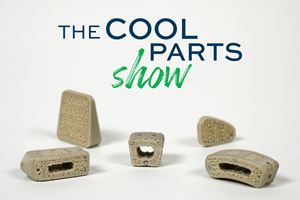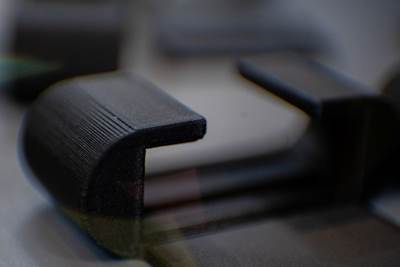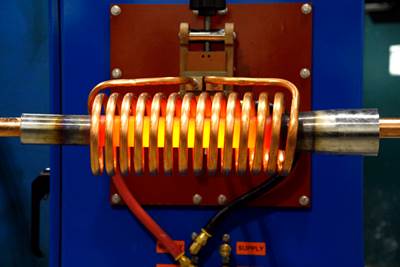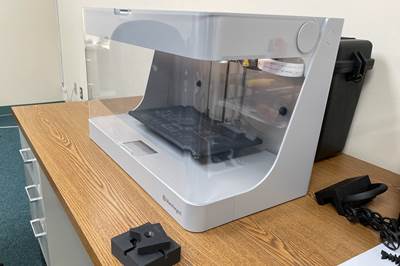3D Printed Human-Operated End-of-Arm Tooling Promotes Safety and Throughput
Toolmaker and injection molder Zero Tolerance developed a manual tool to enable an operator to quickly place inserts into a mold.
Zero Tolerance LLC (Clinton Township, Michigan) is a toolmaker specializing in production of high-complexity, tight tolerance, small-to-medium size injection molds for the medical device, automotive and defense industries. The company also custom injection molds parts for customers in the oil/gas, prototyping and consumer goods markets using materials ranging from olefins to high-temperature polyamides.
Taking advantage of grants available from the state of Michigan during the pandemic, Zero Tolerance’s team acquired an X-7 industrial-grade continuous carbon fiber composite printer from Markforged Inc. and since then has added two additional FDM/FFF Markforged models: an Onyx One discontinuous carbon fiber printer and a Mark Two continuous carbon fiber printer. Initially, Zero Tolerance used its printers to produce prototypes and proof of concepts for customers in continuous and discontinuous carbon fiber-reinforced polyamide (PA) and neat polylactic acid (PLA). The team also participated in a distributed manufacturing program called Project DIAMOnD where participants in multiple locations simultaneously printed the same parts, including protective medical equipment during the pandemic, and later, tourniquets for the war in Ukraine.
A newer use Zero Tolerance has found for its printers is to produce manual (human-operated) end-of-arm tooling or EOAT. The work started with a molding job the company was running for a customer that involved handloading eight 76-millimeter-long brass inserts into a 135°C tool prior to overmolding. Given the tool temperature (and burn risk for the operator) plus the amount of time it took to handload each insert between molding cycles (which could extend effective cycle time significantly), cofounder/co-owner Steve Michon says Zero Tolerance initially priced out a robot. However, this wasn’t a high-volume molding job that could cost-justify that investment, so he and his team went to work and designed, printed and tested a carbon fiber-reinforced polyphthalamide (PPA) device they call the “claw.”
The design freedom of polymer/composite AM makes it easy to design different front-facing/insert holding (middle left and right) and rear-facing/handle versions (right) of the claw manual EOAT that Zero Tolerance LLC has produced for its own and customer molding operations. (Left middle shows an unloaded EOAT waiting for inserts and right middle shows inserts preloaded.) Not only did 3D printing a manual EOAT greatly reduce cost versus using a robot, but it increased operator safety and shortened the effective cycle time versus loading inserts by hand into the hot mold cavity (left showing operator using the claw to rapidly load inserts). Source: Credit Zero Tolerance LLC
As the current molding cycle begins, the technician monitoring the press manually slides eight inserts onto fingers on the EOAT. Once the cycle ends, the mold opens and the last set of parts are demolded, the operator positions the hand-held claw against the cavity side of the tool and, using two guide pins that act as locators to ensure proper positioning, pulls a handle, which strips the inserts off the fingers and slides them into position inside the mold. The operator then removes the claw and closes the press, and the next cycle commences, as the operator loads another eight inserts into the EOAT.
“For an application like this, proper alignment was critical, so it took us a few iterations — with small design changes in critical areas of the claw — to make sure everything lined up properly,” Michon explains. The claw does its job beautifully, increasing operator safety, reducing CAPEX by more than 90% versus a robot and boosting molding throughput by 50%. To date, this EOAT has been used for more than 125,000 molding cycles (producing in excess of one million overmolded parts) and only shows minor wear. Since the claw is designed and printed in 15 different pieces, if components wear or break, or a different sized finger or a different number of inserts are needed, it’s easy to print and replace select components.
“Interestingly, one of our mold customers saw the claw in action in the molding area of our shop and wanted us to design something similar for their own molding operations,” Michon adds. “We’ve also printed EOAT to hold parts during pad printing as well as fixtures to hold precision molded parts during CMM [coordinate measurement machine] inspections.”
Yet another way Zero Tolerance uses its printers is to produce “dummy” inserts to load into the claw when restarting the press. “Instead of wasting precision-lathed or Swiss-turned brass inserts when we restart our press to run another order of parts, we load printed dummy inserts into the claw and then into the mold, which doesn’t know the difference,” he notes. “This way, we’re throwing out inexpensive material, not costly inserts, until we get our molding process stabilized to run for the day.”
Why does Zero Tolerance keep using polymer/composite AM for these types of applications when it has a well-equipped tool shop and could easily machine metal parts?
“First, you essentially add capacity in one area of your shop without having to interrupt work in another area just to create a part for an experiment or a proof of concept, and you can produce that part much quicker at lower cost than machining metals,” Michon continues. “Design time is shorter, so you can iterate much faster to prove out an idea. With the high-strength carbon fiber-reinforced parts we produce on our Markforged printers, we can achieve our objectives in a much lighter design. That way, even if we were to use a robot to operate the tool instead of a human hand, we could use a smaller robot and it would experience less wear thanks to the EOAT’s lower weight. The key is to not be closed minded and not assume something won’t work until you try it out. Additive manufacturing is just another tool in your moldmaking toolbox. It’s not going to do everything, but on the other hand, it’s not going to take away anything from what you’re already doing.”
More From This Author
Peggy Malnati is a Detroit-based contributing writer for CompositesWorld magazine, for which she primarily reports on automotive and ground transportation. SUBSCRIBE HERE
Related Content
This Drone Bird with 3D Printed Parts Mimics a Peregrine Falcon: The Cool Parts Show #66
The Drone Bird Company has developed aircraft that mimic birds of prey to scare off problem birds. The drones feature 3D printed fuselages made by Parts on Demand from ALM materials.
Read MoreQ&A With Align EVP: Why the Invisalign Manufacturer Acquired Cubicure, and the Future of Personalized Orthodontics
Align Technology produces nearly 1 million unique aligner parts per day. Its acquisition of technology supplier Cubicure in January supports demand for 3D printed tooling and direct printed orthodontic devices at mass scale.
Read MoreConcept Sneaker Boasts One-Piece 3D Printed TPU Construction
The Reebok x Botter Concept Sneaker Engineered by HP premiered at Paris Fashion Week, hinting at manufacturing possibilities for the future of footwear.
Read MoreFDA-Approved Spine Implant Made with PEEK: The Cool Parts Show #63
Curiteva now manufactures these cervical spine implants using an unusual 3D printing method: fused strand deposition. Learn how the process works and why it’s a good pairing with PEEK in this episode of The Cool Parts Show.
Read MoreRead Next
Is a Functional 3D Printer Network Possible? Automation Alley’s Project DIAMOnD and the Industry 4.0 Future
The initiative that placed 3D printers at more than 300 Michigan manufacturers is laying the groundwork for a future in manufacturing that is digital, distributed and largely additive.
Read More3D Printing Supports Induction Coils — and Emergency Needs
As a participant in Michigan’s Project DIAMOnD initiative, Tucker Induction Systems received a 3D printer to use any way it saw fit, provided the capacity remains available in case of emergency. Use cases and lessons learned as part of this distributed manufacturing network.
Read MoreAdditive Manufacturing and the War in Ukraine: AM Radio #19
In this latest episode of the AM Radio podcast, we dive into the ways that AM is providing aid and also being affected by the conflict in Ukraine.
Read More
.jpg;width=70;height=70;mode=crop)

